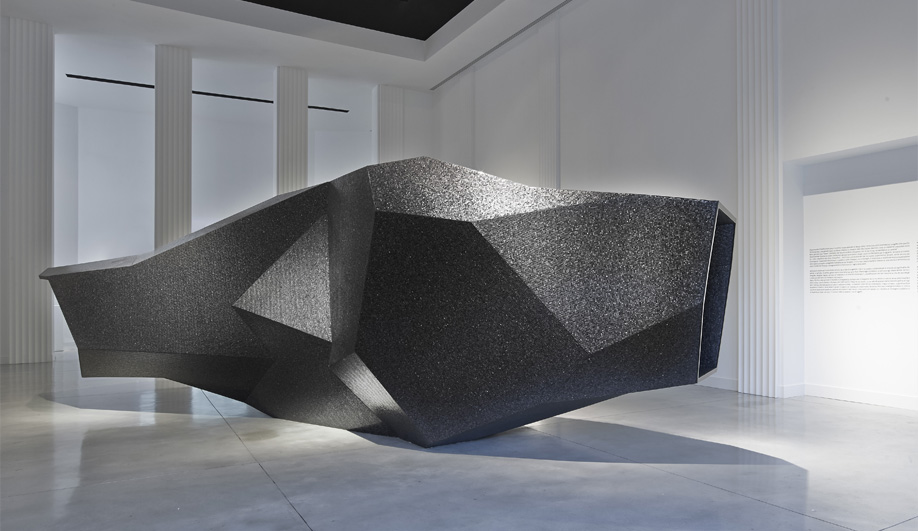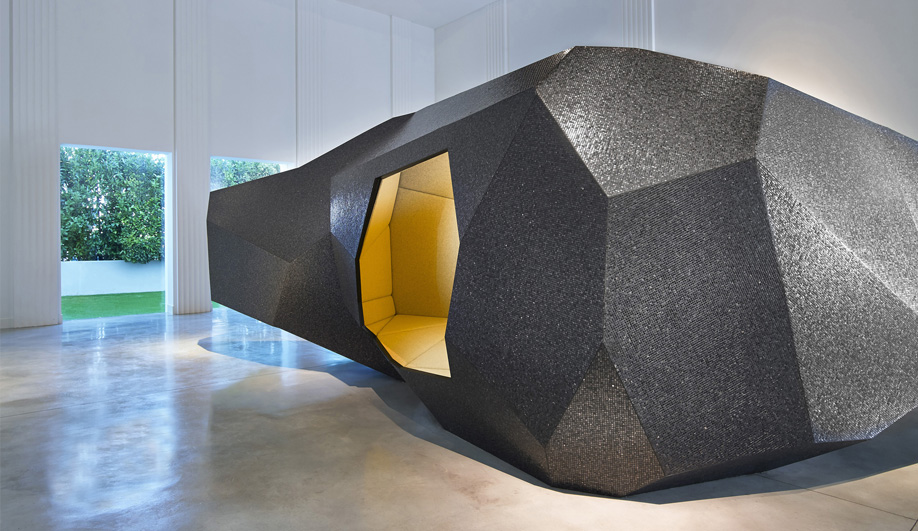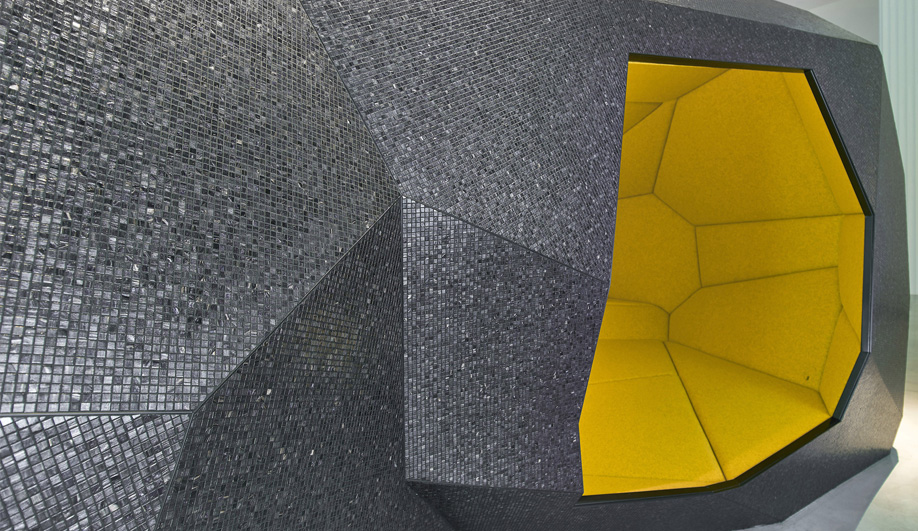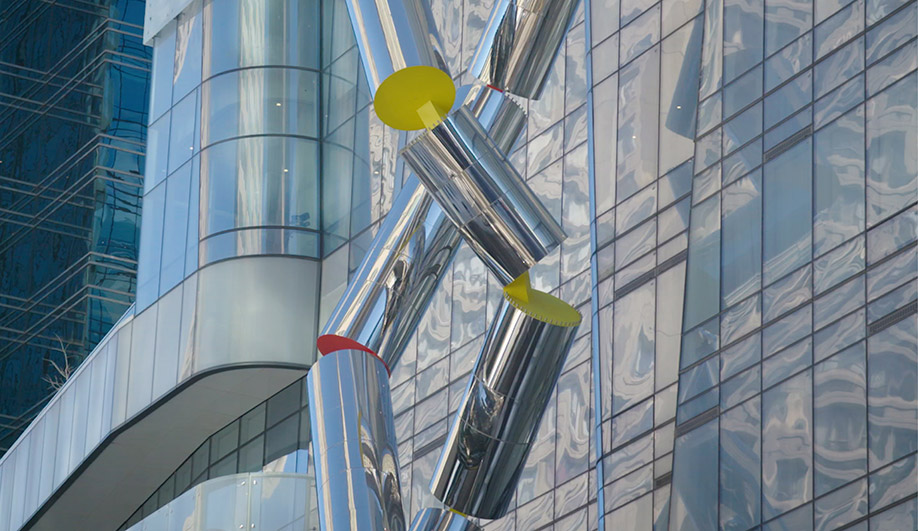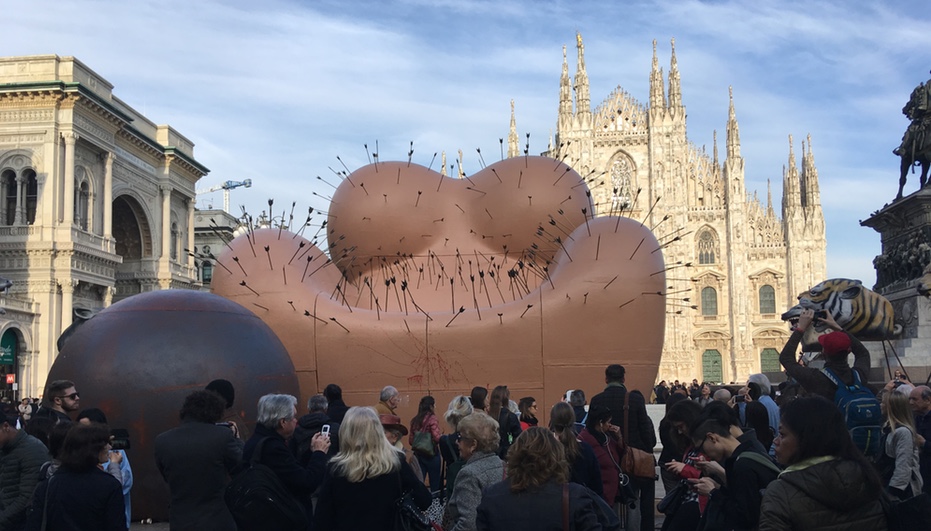The renowned glass-tile company is adding a new showpiece to its foundation in Vicenza, Italy: Arik Levy’s rock-shaped pavilion, cloaked – Darth Vader-style – in black tiles.
Oblong and faceted in form, the Rock Chamber can be entered via a central portal. Visitors step into a warm and plush environment with padded seating, and walls and floors all upholstered in yellow fabric. A chandelier and a red ottoman give the space a cozy warmth, not unlike an open fire inside a cave.
The prehistoric references are intentional. Levy describes the chamber as a carbonized meteorite that has passed through the atmosphere and arrived on earth.
“We are the prehistoric men of the future,” he says, “and this is our future cave.”
While the Israeli designer is well known for creating furniture for big manufacturers – Vitra and Molteni&C among them – more recently his attention has turned to investigating geological forms. One of his series, Craters, consists of giant metal sculptures that are in some cases twice as tall as a human being. Their honeycomb-like structure is buffed to a polished mirror finish or powder-coated in red, white or black. The smaller tabletop objects Levy has produced emulate the look of stalagmites and starbursts.
Officially opened today, his Rock Chamber is the latest addition to the Bisazza Foundation for Design and Contemporary Architecture, which is quickly becoming an important cultural entity and must-see destination. Its multiple gallery spaces contain existing works from Bisazza’s ongoing collaborations with such heavyweights as Studio Job, Patricia Urquiola, Jaime Hayon and artist Sandro Chia.
In June, the foundation launched Experimental Growth, where designers and architects are commissioned to create an original permanent work for the gallery. That same month, the inaugural project was unveiled – an all-white pavilion covered in barely-there white tiles, by British minimalist John Pawson. The cylindrical space is designed to subtly catch rays of light.
By contrast, Levy’s Rock Chamber, now also on permanent display at the foundation, is a whole other type of spacey experiential environment. The future has landed.

